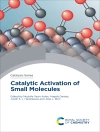Conservation of artefacts and heritage materials is an increasingly popular and fascinating area, spanning both historical and scientific disciplines. Materials come in many forms ranging from sunken ships to tapestries, from buildings to books. With this wide range of matrices and materials to analyse and preserve, an interdisciplinary approach is needed drawing upon skills from many areas of knowledge. Conservation Science: Heritage Materials links these fields of research together forming a comprehensive text book that discusses analytical aspects, wall paintings, organic and inorganic materials. It provides up to date information on subjects including research on decay and degradation and an understanding of the deterioration mechanisms of historic and artistic works. Also included are a number of case studies of particularly important finds including the upkeep of the Mary Rose and the preservation of the sail on Nelsons ship HMS Victory. This book provides an essential guide and reference source for those working in all areas of heritage conservation.
表中的内容
PREFACE; CHAPTER ONE: INTRODUCTION; Cultural Heritage: The Archaeologist, The Conservator And The Public – An Essential Coalition; The Archaeologist; The Conservador; From Discovery to Display; Special problems of underwater recovery; The raising of the Mary Rose – a case study; Preservation of the evidence – a multi-discipline task; Conservation with a purpose; Museums – the past into the future; REFERENCES AND FURTHER READING; CHAPTER TWO: METHODS IN CONSERVATION; INTRODUCTION; PRELIMINARY EXAMINATION; ANALYTICAL METHODS; Interaction of radiation with matter; Interaction of elemental particles with matter; Dating Methods; DIAGNOSIS OF DETERIORATION PROCESSES; CONSERVATION TREATMENTS; PREVENTIVE CONSERVATION; REFERENCES AND FURTHER READING; CHAPTER THREE: PAPER; THE CONSTITUENTS OF PAPER; Fibres; Paper size; THE DIRECTIONAL PROPERTIES OF PAPER; HOW PAPER INTERACTS WITH WATER; DETERIORATION OF PAPER; Acid-catalysed hydrolysis of cellulose; Oxidation of cellulose; DEACIDIFICATION; BLEACHING AND WASHING OF PAPER TO REMOVE; DISCOLOURATION; ACCELERATED AGEING TESTS; SAFE ENVIRONMENTS FOR PAPER; METHODS FOR MONITORING THE DETERIORATION OF PAPER; Physical measurements; Chemical methods; CHARACTERISATION OF PAPER; REFERENCES AND FURTHER READING; CHAPTER FOUR: TEXTILES; THE VARIETY OF TEXTILES; TEXTILE MATERIALS; CASE STUDY I: LINEN FIBRES AND THE VICTORY SAIL; The chemical composition and microstructure of linen; The mechanical performance of the Victory sail; Degradation of cellulosic fibres; Humidity and heat; Acid and alkaline hydrolysis; Photolytic damage; Biological degradation; Acidity measurements on the Victory sail; Conservation and display of the Victory fore topsail; CASE STUDY II: SILK FIBRES AND THE SHACKLETON ENSIGN; The chemical composition and microstructure of silk; Silk processing for use as a textile fibre; The condition of the Shackleton ensign; Assessing the condition of silk by microanalytical techniques; Degradation of silk fibres; CASE STUDY III: WOOL FIBRES AND THE TREE OF JESSE TAPESTRY; The Chemical Composition and Microstructure of Wool; Wool as a Textile Fibre; Degradation of Wool; Conservation and Treatment of the Tree of Jesse Tapestry; ENDNOTE; ACKNOWLEDGEMENTS; REFERENCES AND FURTHER READING; CHAPTER FIVE: LEATHER; THE NATURE AND PROPERTIES OF LEATHER; Introduction; Criteria which define tannage; Collagen; Tanning materials; Conclusion; THE MANUFACTURE OF LEATHER; Introduction; Vegetable tanning processes; Alum tawing; Oil tannage; Fur dressing; THE DETERIORATION OF LEATHER; Introduction; Physical deterioration; Biological deterioration; Chemical deterioration; CONSERVATION TECHNIQUES; Introduction; Biological deterioration; Chemical deterioration; Conclusions; REFERENCES; REFERENCES AND FURTHER READING; CHAPTER SIX: METALS; INTRODUCTION; Extraction; Metallurgy; CORROSION; FIELD TREATMENT AND TRANSPORTATION; CONSERVATION; Acid pickling; Aqueous washing; Electrolytic conservation; Hydrogen reduction; STABILISATION AND CONSOLIDATION; REFERENCES AND FURTHER READING; CHAPTER SEVEN: GLASS AND CERAMICS; INTRODUCTION; DETERIORATION AND CONSERVATION OF GLASS; HISTORY, STRUCTURE AND PHYSICAL PROPERTIES; History of glass-making; Structure, technology and physical properties; DEGRADATION MECHANISMS AND PHENOMENA; Basic reactions in water; Degradation of objects indoors; Weathering of stained glass windows; Degradation of archaeological glasses; RESTORATION AND CONSERVATION; Cleaning methods; Coatings, consolidants, adhesives; Conditions for storage and display; DETERIORATION AND CONSERVATION OF CERAMICS; SUMMARY AND CONCLUSIONS; REFERENCES AND FURTHER READING; CHAPTER EIGHT: CONSERVATION SCIENCE OF PLASTICS; PLASTICS IN HERITAGE COLLECTIONS; THE CHEMISTRY AND PHYSICS OF PLASTICS; Preparation of polymers; Additives; Shaping plastics; IDENTIFICATION OF PLASTICS; Simple tests; Instrumental analytical techniques; DEGRADATION OF PLASTICS; Degradation of cellulose nitrate; Degradation of cellulose acetate; Degradation of plasticized PVC; Degradation of polyurethane foam; CONSERVATION OF PLASTICS; Conservation of cellulose nitrate; Conservation of cellulose acetate; Conservation of polyurethane foam; REFERENCES AND FURTHER READING; CHAPTER NINE: STONE; INTRODUCTION; THE DEGRADATION ‘EQUATION’; Material; Process; Environment; Limestone Weathering in an Urban Environment: Illustration of the Interaction of the Three Factors; CONSERVATION PRACTICES; Identification; Prevention; Barriers to Agents of Degradation; Removal of Degradation; Consolidation; REPLACEMENT; CONCLUSION; REFERENCES AND FURTHER READING; CHAPTER TEN: WALL PAINTINGS – ASPECTS OF DETERIORATION AND RESTORATION; INTRODUCTION; WALL PAINTINGS AS AN INTEGRAL PART OF BUILDINGS; DAMAGING PROCESSES; Deterioration by soluble salts; Deterioration by microorganisms; Parameters enhancing microbial colonization; Biodeterioration; CLEANING AND CONSOLIDATION; Consolidation; Cleaning methodologies; SUMMARY; REFERENCES AND FURTHER READING; CHAPTER ELEVEN: BIODETERIORATION OF ANCIENT TIMBERS; THE BIODETERIOGENS; Marine wood-boring animals; Teredinids; Erosion bacteria; Tunnelling bacteria; Cavitation bacteria; Bacterial symbionts of shipworm; Soft rot fungi; Basidiomycete fungi; Insect borers; WOOD STRUCTURE; Archaeological wood recovered from the marine environment; Properties and condition of waterlogged archaeological wood; STORAGE OF ARCHAEOLOGICAL WOOD; Wrapping in polyethylene bags or sheeting; Advice to conservators; Storage of large wooden artefacts; The storage of large wooden structures (Mary Rose Hull); Reburial; CONSERVATION OF ARCHAEOLOGICAL WOOD; Definition and aims; Lumen filling treatments; Bulking treatments; Surface coatings; CONSERVATION METHODS; Removal of mineral inclusions; Microbial activity; Polyethylene glycol method; In situ polymerisation with radiation curing monomers and resins; Drying following conservation treatment; CONCLUSIONS; REFERENCES AND FURTHER READING; CHAPTER TWELVE: IN-SITU PRESERVATION OF WATERLOGGED ARCHAEOLOGICAL SITES; IN SITU PRESERVATION; ENVIRONMENTAL MONITORING; Level; Pore water composition; Redox potential; p H; DETERIORATION OF MODERN MATERIALS ANALOGOUS TO ARTEFACTS; WHAT DOES ENVIRONMENTAL MONITORING TELL US IN ITSELF?; Case Study: In situ preservation of the site of Nydam; Deterioration and protection of wooden Artefacts; Deterioration of iron artefacts; SUMMARY; REFERENCES AND FURTHER READING












